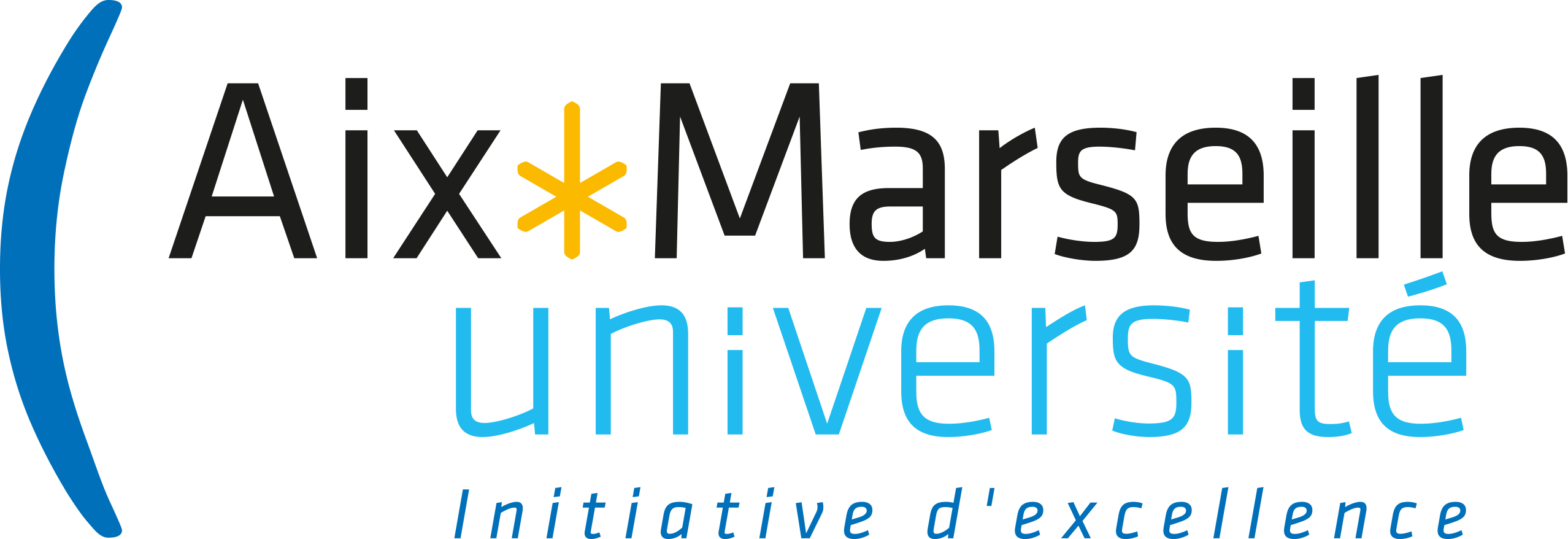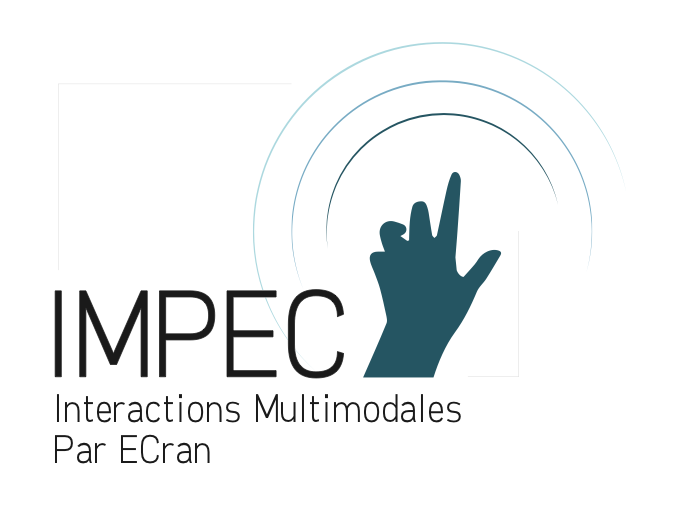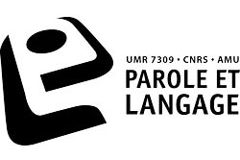
Réunion d’équipe & séminaire LEdA – ouvert à toutes et à tous !
27 septembre 2023 10h30-12h, B011 au LPL
Bingjié Yun
(Doctorante LEdA)
Représentation et enseignement de la grammaire en milieu universitaire chinois: mise en oeuvre d’une démarche méthodologique pour l’analyse des manuels et des pratiques enseignantes
Préparation pour le colloque « Grammaire et didactique : Quelles ressources linguistiques pour l’enseignement / apprentissage du français et des langues ? – Transposition, médiation, contextualisation, appropriation » qui aura lieu les 5 et 6 octobre à l’Université de Lille.
Page de l’équipe LEdA : https://www.lpl-aix.fr/recherche/equipes/leda/

Fanny Trifilieff
(DirCom AMU)
INFUSE : Découverte du nouvel outil de mise en valeur de la recherche à Aix-Marseille Université
Nous avons le plaisir d’accueillir Fanny Trifilieff, chargée de communication scientifique auprès de la DirCom AMU, qui présentera Infuse, le futur webmagazine universitaire.
Vendredi 29 septembre 2023, à 10 heures
En salle B011 et EN VISIO directement à la suite de la réunion du laboratoire
[Evènement réservé aux membres du LPL]

Séminaire
dans le cadre de la prochaine réunion de l’équipe LEdA
Mercredi 31 mai 2023, de 14h à 14h30 (partie ouverte à tout le monde)
Aymen Nefaa
(doctorant en 4e anné, co-dirigé par Leila Boutora et Nuria Gala)
Approche éducative trilingue biculturel pour les enfants sourds en Tunisie : Attitudes et applicabilité
Résume : Le travail présente un modèle éducatif trilingue biculturel conçu spécifiquement pour répondre aux besoins des enfants sourds en Tunisie. L’applicabilité du modèle a été évaluée en examinant les attitudes envers les trois langues qui constituent le modèle proposé. L’évaluation a été réalisée dans le but de mesurer la pertinence et la faisabilité de l’adoption de ce modèle éducatif dans le contexte tunisien, en tenant compte des spécificités sociolinguistiques de la région.
Page Web de l’équipe : https://www.lpl-aix.fr/recherche/equipes/leda/

Séminaire de
Isabelle Gras
(Conservatrice de bibliothèque au Service Commun de Documentation d’AMU, Questions éthiques et juridiques)
Vendredi 26 mai 2023, à 10h
En visio (le lien zoom sera communiqué par mail avant l’évènement)
Organisé par la cellule Science ouverte du LPL et ouvert à tous les membres du laboratoire
Publications et droit d’auteur : Principes du droit d’auteur en droit français, contrat d’édition, licences Creative Commons
Page Web de la cellule Science ouverte : https://www.lpl-aix.fr/recherche/science-ouverte/
Crédits : Designed by pikisuperstar / Freepik

Seminaire IMPEC
Marc Jahjah
(LAMo / Université de Nantes)
Vendredi 2 juin 2023, de 10h à 12h
Au LPL, salle de conférences B011 à Aix-en-Provence & En Visio
Des mondes de l’écriture aux théories queers et intersectionnelles
Résumé :
Dans cette intervention, je présenterai mes recherches qui portent sur les usages des langues et de la parole dans le domaine du politique, principalement sur la gestion collective de la diversité linguistique et l’usage de la parole dans les relations d’emprise. Je parlerai de mes deux principales enquêtes. La première porte sur les politiques linguistiques en domaine occitan et plus spécifiquement sur le mouvement Calandretas qu vise depuis 40 ans à la revitalisation de la langue occitane par le biais de l’enseignement immersif. Cette étude permet de mieux comprendre les enjeux et les limites d’une action de revitalisation linguistique “par en bas”. La seconde enquête concerne l’analyse de discours issus de groupes “sectaires”. J’évoquerai ce que recouvre cette notion et les enjeux de l’étude de la parole dans un tel contexte.
Séminaire de M. Jahjah ouvert à tout le monde (sessions de l’après-midi réservées IMPEC)
Pour l’accès en visio, merci de contacter Christelle Combe
Site Web : https://impecseminar.hypotheses.org/
Seminaire de
Pia Greca
(Institute of Phonetics and Speech Processing, LMU Munich)
Vendredi 21 avril 2023, de 10h30 à 12h
Au Laboratoire Parole et Langage, salle de conférences B011 à Aix-en-Provence
Cue-trading relationships in sound change: the case of metaphony in the Lausberg area (southern Italy)
Résumé :
In ongoing sound changes, a coarticulatory effect is often enhanced as the coarticulatory source that gives rise to it wanes. But quite how phonologization and these reciprocal coarticulatory changes are connected is still poorly understood. In my presentation, I am going to address this issue by analyzing the production and perception of metaphony and related suffix vowel erosion in three geographically proximal varieties spoken in the Lausberg area in Southern Italy. Depending on the dialect, the outcome of metaphony can be either different degree of raising or diphthongization of the stem vowel triggered by high vowel suffixes, e.g. [bɛlla], (`beautiful’, fem. sg.) becomes either [bellu], [bjɛllu] or [billu] in the masculine. Meanwhile, the suffix vowel triggering metaphony might be variably either reduced, neutralized, or completely deleted, e.g. [bɛll(ə), bill(ə)]. Metaphony might therefore have a crucial role in the preservation of cues to inflectional morphology whose perception would be otherwise compromised.
In the first part of the talk, I will present the main results from the acoustic analyses, which were based on a corpus of 35 speakers producing mostly disyllabic words with phonetically mid stem vowels and suffix vowels that varied in phonetic height. The results of functional principal components analysis applied to the stem vowels’ first two formant frequencies showed a progressively greater enhancement to the vowel stem across the three regions that was characterized by raising, diphthongization, and then further raising and monophthongization. Suffix erosion was quantified by counting deletions and the degree of vowel centralization. The analysis showed a reciprocal relationship between stem enhancement and suffix erosion across, but not within, the three dialects. Overall, these results suggest that a trade-off of cues between suffix and stem vowel has progressed to different degrees between the three varieties.
In the second part of the talk, the relationship between production and perception is explored in two varieties that present two specular metaphony patterns: in the East of the Lausberg area, the transfer of inflectional morphological from a suffix to a mid-stem vowel is complete, whereas in the village of Mormanno it is more marginal and with suffix preservation. Listeners of both varieties identified in a forced-choice test inflectional information from stems in stimuli produced in both varieties with all suffix information removed. The results showed a perceptual advantage in morphological categorization when listeners perceived stems of their own variety and suggest the presence of two modes of perception. In fact, while listeners from the East were best at distinguishing grammatical categories when the stem vowels were categorically different ‒ thus showing a rather phonological perceptual strategy ‒ Mormanno listeners were in general more sensitive to fine phonetic detail.











